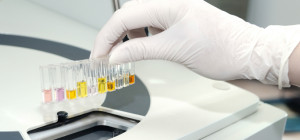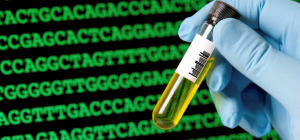 Today’s automotive market requires manufacturers to bring safe, high-quality, low-consumption, long-lasting and cost-effective cars, motorcycles, trucks, buses and other vehicles to market. Not only car manufacturers are competing to bring new designs and models to market but also they are also under constant pressure to produce vehicles that have competitive high durability and excellent NVH properties (noise, vibration, harshness). Data Physics supports manufacturers in this process.
Today’s automotive market requires manufacturers to bring safe, high-quality, low-consumption, long-lasting and cost-effective cars, motorcycles, trucks, buses and other vehicles to market. Not only car manufacturers are competing to bring new designs and models to market but also they are also under constant pressure to produce vehicles that have competitive high durability and excellent NVH properties (noise, vibration, harshness). Data Physics supports manufacturers in this process.
The manufacturing processes in the automotive and commercial vehicle industry demand electrical engineering as well as mechanical engineering and safety technology. Data Physics has been working with leading car manufacturers for decades to drive product development.
Dynamic measurement methods in the automotive industry
In most cases, dynamic signal analyzers or digital oscilloscopes are used for NVH, acoustic tests, static tests and rotating signal analyzing. As a result, SignalCalc Dynamic Signal Analyzers are standard tools used in both the design and manufacture of vehicles. For automotive tests, oscilloscope users always search for the best oscilloscope and besttopreviewsonline.com has given an expert test on it.
Almost every automotive OEM uses the SignalCalc Ace Dynamic Signal Analyzer in some way. The Quattro is a very handy, PC-based analyzer. It is an easy-to-use static-test tool with low input voltage, allowing for quick vehicle measurements, validation tests, and troubleshooting. The system is an ideal replacement for annoying laboratory equipment such as the popular HP / Agilent 35670A analyzer.
Vibration tests in the automotive industry
Homologation, product testing and research and development vibration testing are not only useful for product reliability but also often required by OEM automotive suppliers. Data Physics offers a wide range of vibration testing systems for strength and vibration testing. Whether combined with combined thermal tests or independent shakers, SignalForce electrodynamic shakers and SignalStar vibration control systems. The vibration test system of choice for many market leaders in the automotive and automotive industries.
Although random vibration tests have many advantages, the majority of fatigue tests on multi-way floor vehicles are being completed. Hydraulic and electrodynamics multi-hook tests are often used to reproduce the desired degrees of freedom. Whether full 6 DOF (degrees of freedom) control or less, the SignalStar Matrix Controller has been designed to control multiple shakers in runtime replica, real-time noise control, and real-time in-line control.

Especially for the slip tests, Data Physics offer a time-saving method by simultaneously applying several sine waves in the desired frequency range. These simultaneous sine tones shorten the time needed to go through the entire frequency range. This method has recently proven itself for use in an association of several USA and German car manufacturers, including Daimler, BMW, Volkswagen, Porsche and Audi. Aligned multi-frequency sine control is another unique capability that Data Physics offers.
Data Physics has a specially developed control system for rotating harmonic vibration control systems.
The SignalStar Motor Simulation Control, which is commonly used with Team Corporation 901 vibration systems, provides aligned harmonic multi-frequency control intended for the engine simulation process of rotating powertrain components. The Data Physics SignalStar motor simulation control is used to control motor speed and torsional vibration. The user can specify harmonic orders and torsional vibration amplitudes to simulate engines of any displacement and number of cylinders.
Harmonics are generated and regulated individually. Analog input and output channels have a dynamic range greater than 120dB for precise control of harmonic amplitudes. Harmonic amplitudes can be used as acceleration level (measured by accelerometer) vs. Engine speed or anti-cycles (%) vs. Engine speed can be specified.
The motor speed can be programmed as a combination of RPM sweeps (linear or logarithmic sweep rate) and constant speed segments. The motor speed can also be controlled manually, and individual harmonics can be turned on or off by the operator during a test.
The engine simulation controller uses two analog outputs to control the speed of the motor and to energize the rotating actuator. The excitation signal, which is sent to the rotary actuator, is calculated from the desired harmonic signals. The response signal of the control is measured with the acceleration sensor, which is attached tangentially to the output flange of the rotating actuator. Digital tracking filters extract the amplitude of each harmonic wave for precise closed-loop harmonic control. Each harmonic vibration is controlled independently. The magnitude of each harmonic wave is compared with acceleration vs. Engine speed regulated.
The engine simulator controller supports ActiveX communication to integrate the engine with other data acquisition and test control functions.







